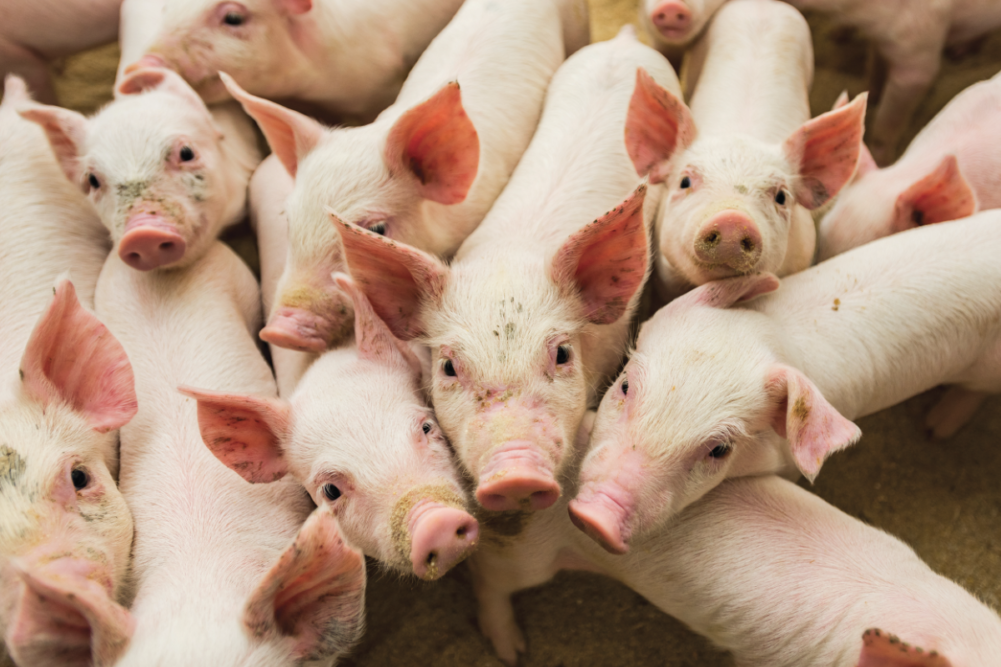Nearly two years after African swine fever (ASF or ASFV) was detected in China, the number of active cases is starting to ebb, but it is too soon to say whether it is a long-term trend or an anomaly.
Several factors likely contributed to a decrease the last several months, said Cassandra Jones, associate professor in the Department of Animal Sciences and Industry at Kansas State University (KSU), including the coronavirus (COVID-19), which has limited the movement of people and animals. Farmers also are better understanding transmission and taking necessary biosecurity measures. In addition, Southeast Asia was in its dry season, so the decrease could be due to the seasonality associated with viruses, she said.
“From January through May we saw a decline in new cases,” Jones said. “It’s difficult to say why but it’s likely all three of those factors. Since May and coming into July, I think we’ve started to see more positives and started to see more outbreaks. Time will tell, but I’m not overly optimistic yet.”
ASF is a highly contagious and deadly viral disease of domestic and wild pigs, which is responsible for serious economic and production losses, according to the World Organization for Animal Health (OIE). There is no vaccine or cure, so affected and exposed herds are culled. The disease is spread through direct contact with infected domestic or wild pigs, indirect contact through ingestion of contaminated material, and contaminated fomites or biological vectors.
It is not spread from swine to humans and is not a threat to human health, nor does it cause a food safety issue, Jones stressed.
Currently, there are 25 countries or territories with new or ongoing ASF outbreaks for a total of 7,043, according to an OIE report for the period from June 26 to July 9. At the beginning of 2020, the OIE reported 12,219 outbreaks in 23 countries.
No cases have been reported in North America, South America or Australia, but it may just be a matter of time, Jones said.
“None of us can predict the future,” she said. “It’s likely a matter of time before it continues its spread. I’ve been wrong for two years. I’m going to be very surprised if it’s not here in the next six months, but I hope I’m wrong again.”
Disease spread
Since mid-February, the total number of outbreaks has trended down, according to data from the OIE. From its report ending Jan. 30 to its report ending Feb. 13, the number of outbreaks dropped to 9,449 from 11,461. Since then the total has continued dropping to just a little over 7,000 in the most recent report. However, the number of new cases reported has continued to fluctuate, and the number of countries impacted has hovered between 21 to 25. A total of 25 countries/territories have reported new or ongoing outbreaks, including 10 in Europe (Bulgaria, Greece, Hungary, Latvia, Moldova, Romania, Russia, Serbia and Ukraine); 11 in Asia (China, India, Indonesia, North and South Korea, Laos, Myanmar, Papua New Guinea, Philippines, Russia, Timor-Leste and Vietnam); and three in Africa (Namibia, Nigeria and South Africa).
ASF can spread to domestic pigs from infected wild boar and ticks, both of which are difficult to control. Initially, it can be misdiagnosed because mortality is low at first and the symptoms are similar to salmonella, Jones said. ASF may not be diagnosed until several days later, during which time cross contamination may have occurred.
Several promising vaccines are being developed, but none are commercially available. The virus can survive for long periods of time on surfaces.
“Like COVID-19, ASF is spreading faster than the speed of research,” said Jones, during the American Feed Industry Association’s Purchasing & Ingredient Suppliers webinar on July 21. “We are making fast progress in ASF, at the same time, we continue to see it spread throughout the world. That’s one of the biggest challenges we have with ASF currently.”
Jones said she considers it a victory that North America, South America and Australia are still ASF-free. Much work has gone into identifying ways that ASF can enter the United States, she said. In examining likely disease pathways, the USDA said feed or feed ingredients pose a low to moderate risk, but the degree of uncertainty is high.
“The scariest thing is that high degree of uncertainty,” Jones said. “We just don’t know about the potential risk. If we can evaluate those pathways of entry, we can prioritize our focus on those biggest gaps.”
One of the highest risks is swine products and byproducts, particularly illegal imports. Smuggling of pork remains one of the biggest challenges and is an area where the USDA will put its resources toward ASF prevention going forward.
The possibility of contamination from feed would depend on three main factors: likelihood of the contamination of the ingredient; transboundary survival of the pathogen; and whether there is enough virus to cause infection.
“The industry has worked to address risk in each of these areas,” Jones said.
Researchers studied a pig operation in Vietnam, a current ASF hotspot, in order to determine how likely ASF is to enter the United States through feed or feed ingredients. The operation is one of the largest pork producers in Vietnam, has a relatively modern production system and is located in a pig-dense region.
Nearly 2,500 samples were collected in August 2019 from ingredients, complete feed, transportation systems used at farms with and without disease, the feed mill and pig transfer station. Of the 910 samples of ingredients and feed, nine were positive for ASF, a positivity rate of 1%.
“This continues to tell us that ingredients and feed are not a primary source of ASF transmission,” Jones said.
Of the 627 samples taken from delivery vehicles, seven were positive with five coming from cab surfaces and two from exterior surfaces. As a result, protocols for cleaning vehicles were changed and since then, there have been no positive tests.
Two of the 221 samples taken from the feed mill were positive for ASF, Jones said. One positive came from an area where drivers waited for their vehicles to be disinfected. Again, protocols were changed so that drivers stay in their vehicles. Another positive was found at a bag feed spout from a line that was continuously fed. It’s unclear whether that was backward or forward contamination, Jones said, and samples are still being analyzed.
The Vietnam case study reinforced for researchers that feed ingredients and feed are not a primary source of ASF transmission. In fact, the primary source of contamination came inside of vehicles.
Jones noted that farms have strict biosecurity measures from farm to farm, but there is a gap from farm to feed mill. Trucks travel back and forth to the same feed mill from multiple farms, including some that are ASF positive. A truck can carry the virus back to the feed mill, infecting the mill and then transporting the virus to another farm.
“That can lead upstream to ingredient facilities,” Jones said. “Many times we think about feed safety being ingredient-based, that contamination starts there. Usually ingredients aren’t going to sprout bacteria. It begins with a single animal and works its way back through the system. If it comes to the US, it can spread very quickly through the feed supply chain if we don’t get a better hold on it.”
Jones said she does not know if ASF can ever be totally eradicated. There is no real example to point to and say it will be like this or that disease, she said.
“What makes me more optimistic is that it doesn’t seem to be evolving as much as some of the RNA viruses,” she said. “It’s hard to find a vaccine, but once we have one, it will likely be similar to foot and mouth disease. We may some regions that have challenges controlling it, but we will be able to declare some countries ASF free.”
Market impact
While herd recovery is underway in China, a significant drop is still expected in pork production this year, according to Rabobank and the Foreign Agricultural Service of the US Department of Agriculture. Hog supplies are well below historic levels and pork production is expected to be down 15% year over year, the FAS said. COVID-19 measures and slaughter plant closings have dampened pork production in other regions, including North America, Brazil and parts of Europe. The USDA lowered its pork production expectations by 2% for both the United States and Brazil.
China and Southeast Asia are expected to continue to increase pork imports, with China’s imports expected to reach record levels, Rabobank said.
ASF is having less of an impact on feed markets today than a year ago, Jones said. Some provinces in China saw feed consumption drop more than 30%. That is starting to rebuild as the nation looks to repopulate its swine herds.
Still, it is going to take 10 years to rebuild the sow numbers to where they were, Jones said, citing Rabobank.
“It’s just the beginning of that rebuilding process,” she said.
Repopulating is not simple and requires constant diligence to prevent recurrences, especially in regions with a high rate of infection. Even with a disease such as porcine endogenous retroviruses (PERVs), where more information is known about controlling the spread and decontamination, repopulating is an ugly process, Jones said.
“With ASF we don’t know the best sanitation strategies for barns or how long we should allow them to sit,” she said. “We don’t know a lot of those aspects. We do know ASF is like an armored truck that stays around forever. You can do your darnedest to get a facility cleaned up, but the fomites stay around for a long period of time.”






